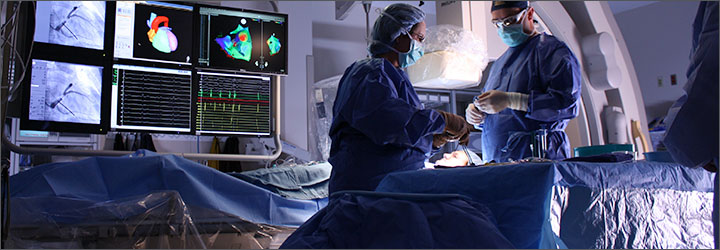In a medical field as complex as neurology, new applications are being found to the optical surgical navigator. This is partly because medical information technologies have made tremendous progress over the last two decades. A significant advance in this area has been made through the development of Optical Surgical Navigation technology. The main purpose of this technology is to help neurological surgeons improve the accuracy and efficiency of surgical procedures.
This modern technology provides the surgeon with interactive 3D information about brain tissue, which is vitally important for successful, safe, and less invasive surgery. This 3D information is generated from magnetic resonance imaging (MRI), multi-slice zero tomography (MCT) and computed axial tomography (CT). These images combine to create a three-dimensional representation of brain tissue.
How do optical surgical browsers help neurologists?
The optical surgical navigator allows the surgeon to perform more accurate surgical procedures by providing critical information about the exact location, direction, and size of tissues. Thus, these instruments enable surgeons to do more complex, more detailed neurologic procedures with a lower risk of healthy tissue injury.
An important application of surgical navigators in neurosurgery is related to the insertion of neurofunctional prosthetic equipment within the central nervous system (CNS). These prostheses are used as treatment devices for chronic pain, epilepsy, Parkinson disease, and other neurologic disorders. Browser technology provides surgeons with a detailed 3D view of prosthetic devices, allowing them to make precise cuts before inserting the device into the CNS.
What other applications do surgical browsers have in the field of neurology?
Another important application of surgical navigators in neurology concerns tumor resection. As tumors grow, they extend branches into adjacent brain tissue, making the process of complete resection difficult. This situation could lead to recurrence of the cancer and possibly recurrence of the pain. In this sense, these instruments contribute to surgery in stages, so it provides the surgeon with an attached virtual vision before starting to make incisions in the brain tissue.
The surgical navigator is also expected to play an important role in the diagnosis of various brain diseases. For example, this instrument has been used to detect small variations in physiologic patterns of brain tissue, which helps the surgeon identify pathologic brain lesions. This information (related to brain function) is essential for identifying neurologic disorders such as stroke, brain cancer, Alzheimer disease, and multiple sclerosis.
Why should neurologists have this tool in their surgical procedures?
The surgical navigator is a vital tool for the treatment of acute traumatic brain injury. This not only provides a 3D view of brain tissue for the surgeon, but also allows him to predict future complications if treatment is inadequately performed. This helps surgeons identify damaged tissue quickly and accurately.
In conclusion, the optical surgical navigator has become a useful tool in the neurological clinical practice. This modern technology facilitates neurologic procedures by providing the surgeon with 3D information about brain tissue, which helps improve the accuracy and efficiency of these procedures.
The surgical navigator also plays a crucial role in the diagnosis and treatment of various neurologic conditions, as well as in the treatment of traumatic brain injuries. Therefore, the optical surgical navigator is rapidly becoming an essential tool for neurological surgeons.
What does Kalstein offer neurologists?
The human brain is one of the most complex organs of nature, therefore, when the physician must apply any surgical procedure, it is better than having a team such as optical surgical navigators.
Kalstein, as a manufacturer of medical equipment of cutting-edge technology, provides neurologists with navigators that allow to create a 3D image of the tissue to be intervened, with a high resolution, being able to determine with a high precision the size of the injuries. If the equipment is of interest to you, you can consult more technical information, prices, purchase and quote on the links HERE and HERE

